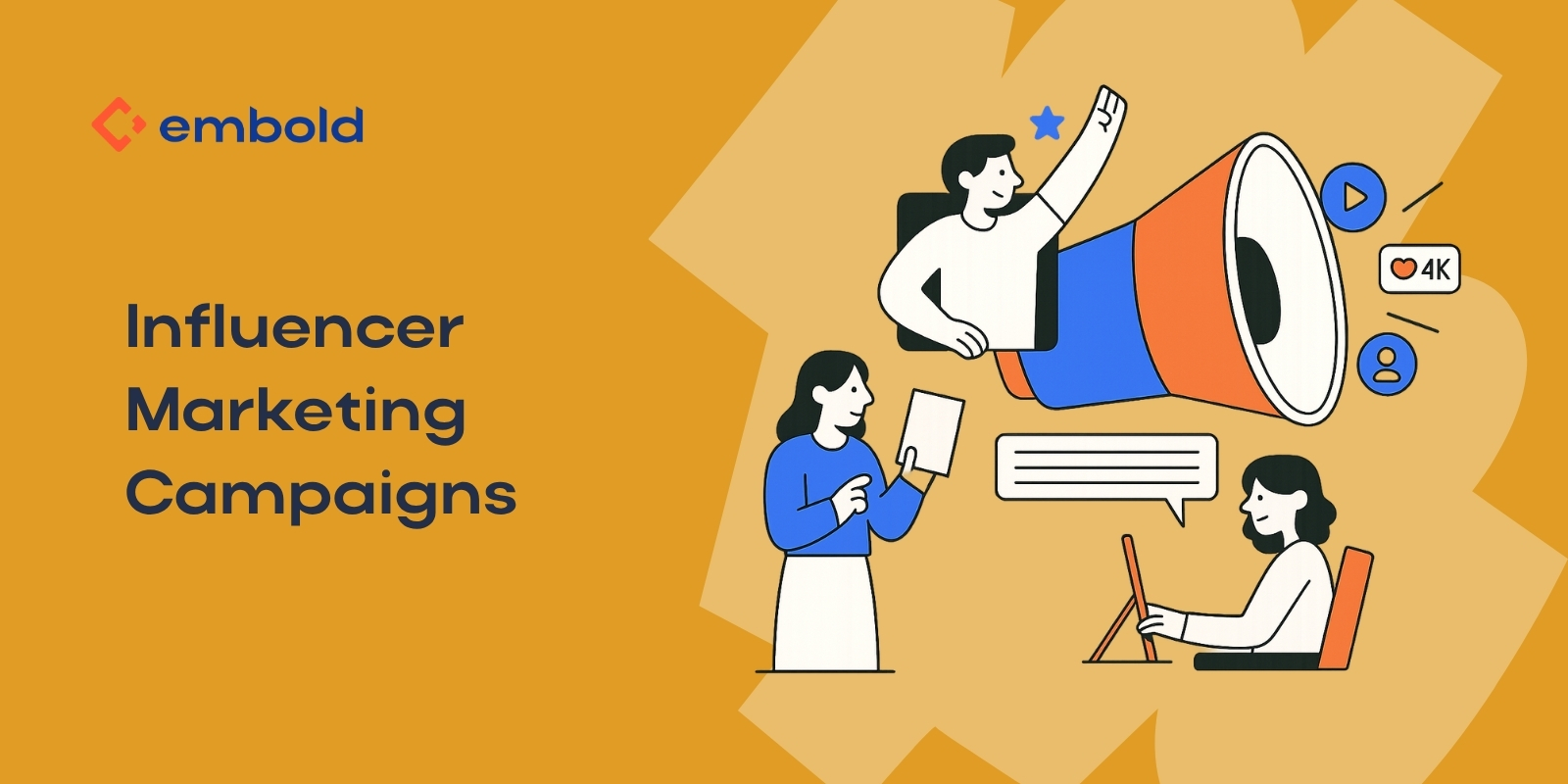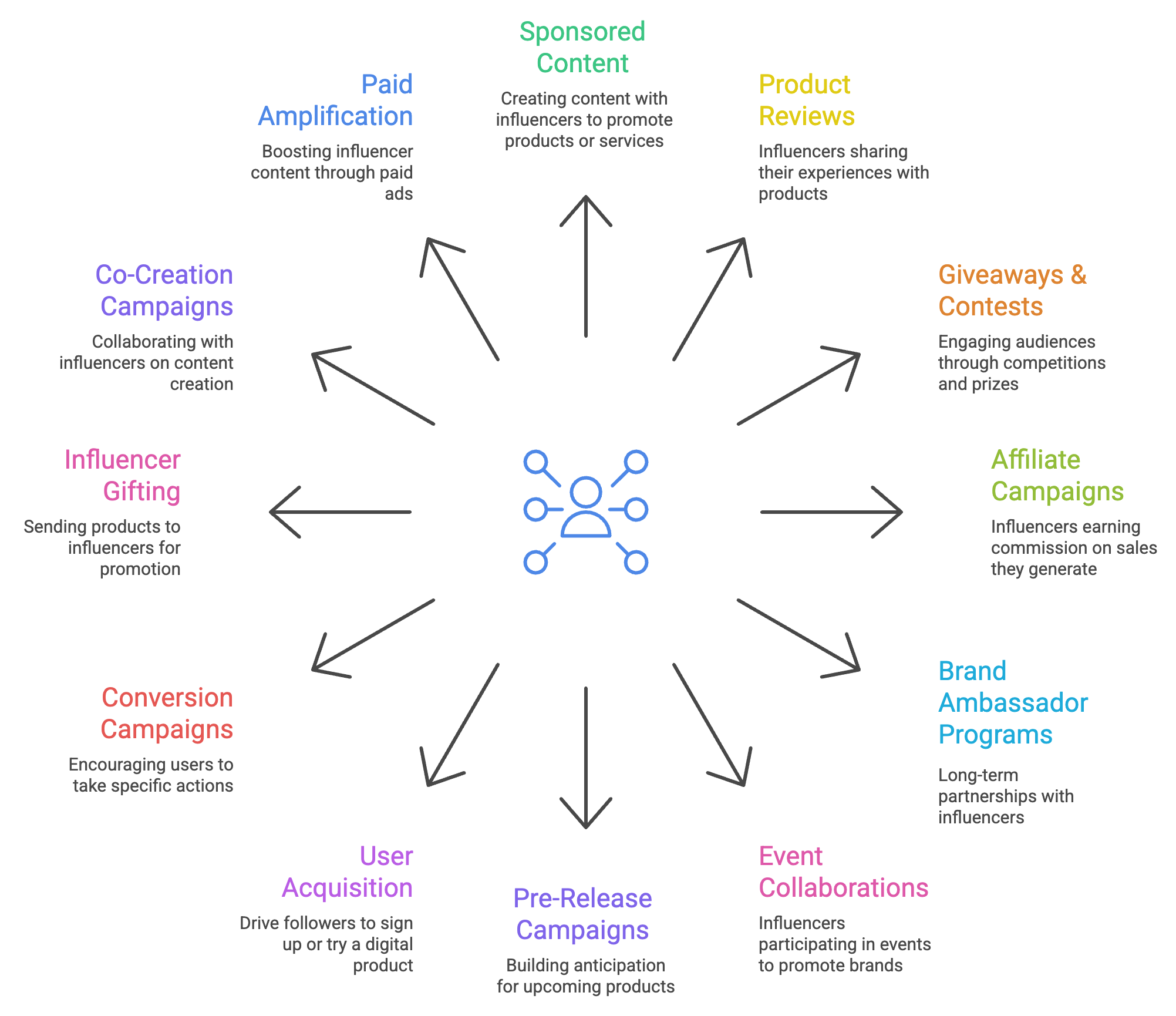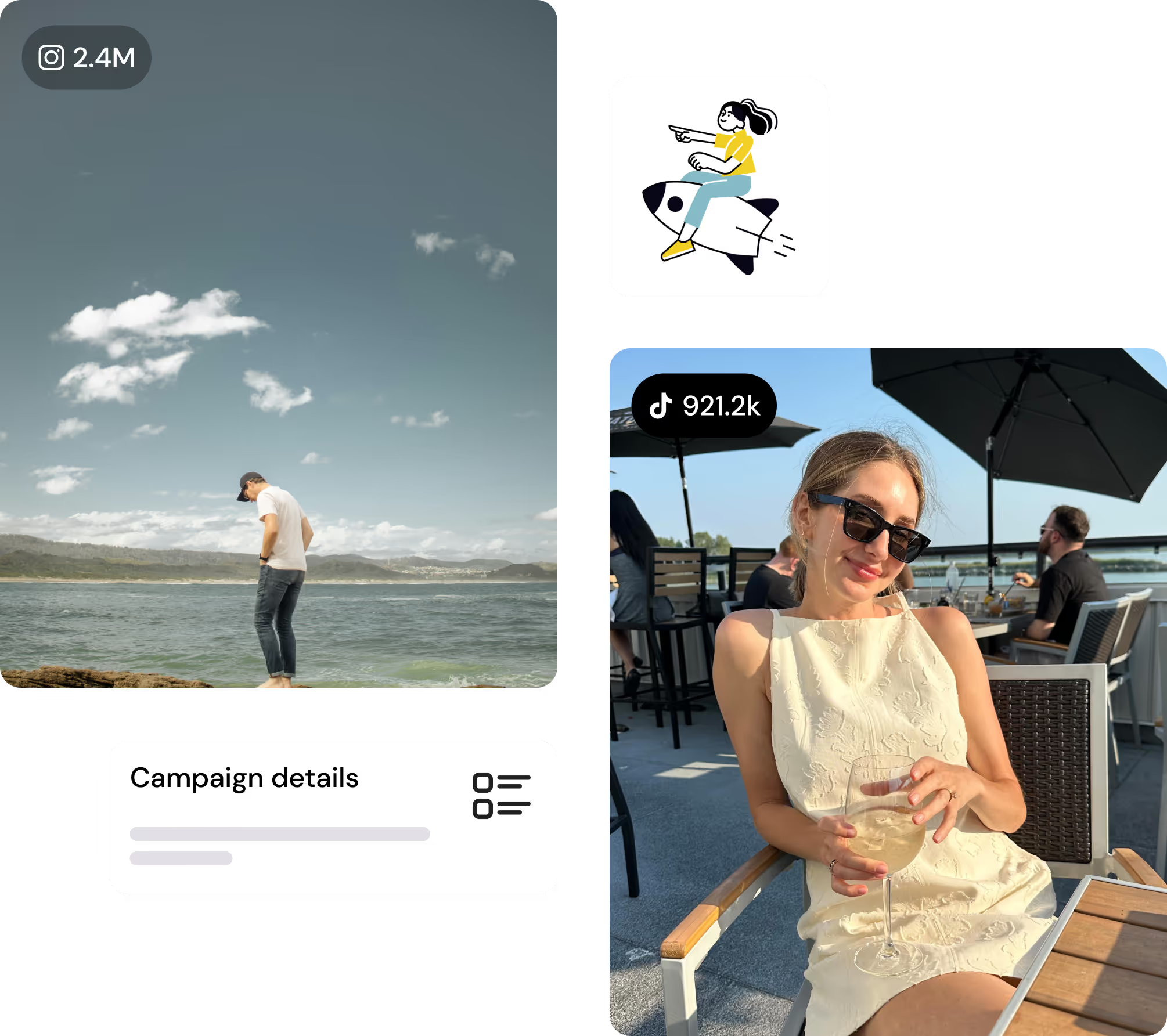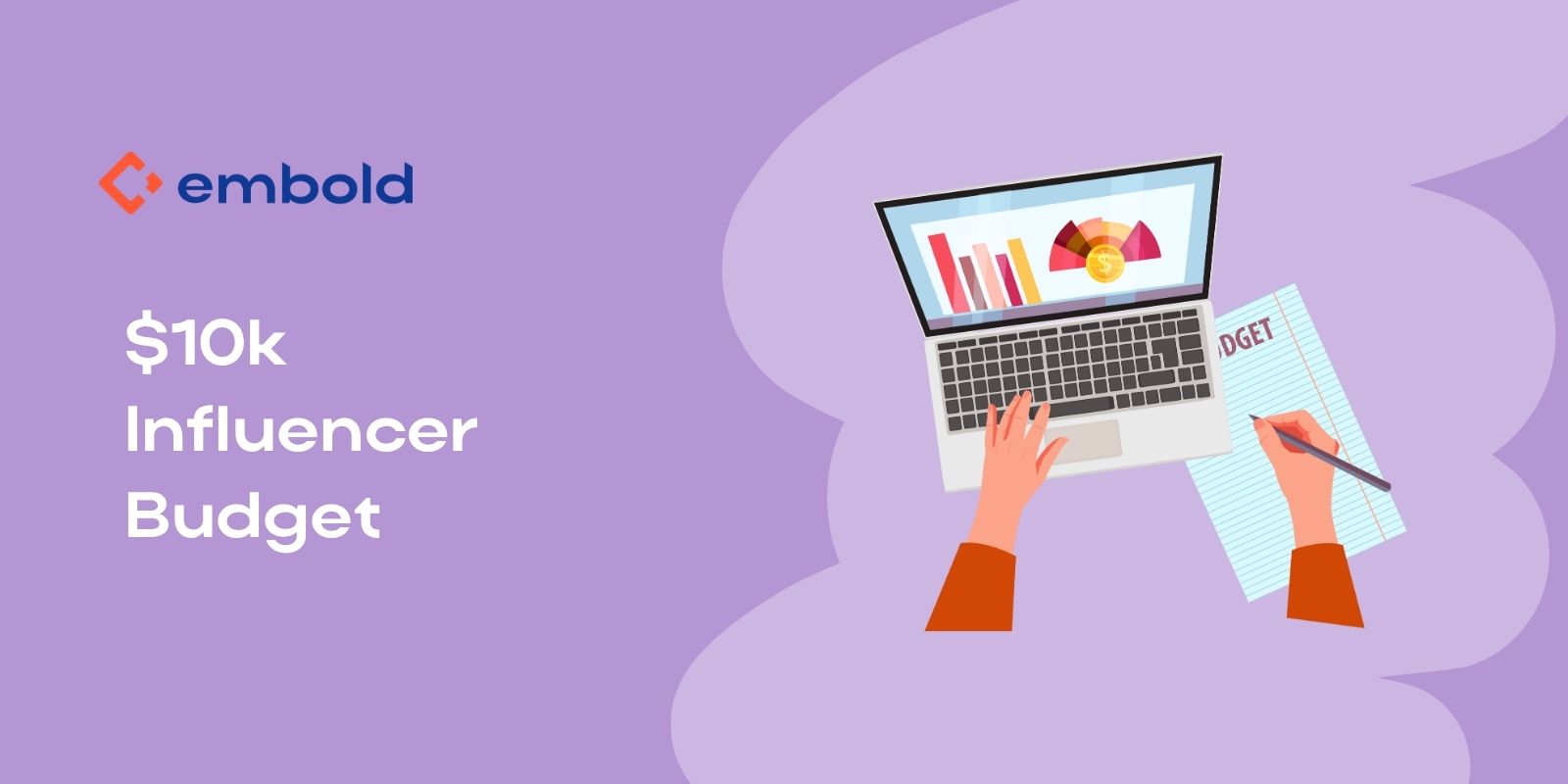
The Different Types of Influencer Marketing Campaigns (and How to Pick the Right One)

Influencer marketing isn’t a trend; it’s now a cornerstone of modern marketing strategies for Canadian brands.
Canada’s influencer advertising spend is expected to surpass $1 billion by 2030. The reason? Trust. Globally, 69% of consumers trust influencer recommendations, especially when the content feels authentic and aligns with their values.
But influencer marketing isn’t one-size-fits-all. To succeed, you need to choose the right campaign type for your business goals.
Whether you’re aiming to build brand awareness, drive conversions, or boost user acquisition, this guide will help you understand the different types of influencer campaigns, and how to use them effectively in the Canadian market.
Why Influencer Marketing Works in Canada
Canadian consumers value authenticity, local connection, and cultural relevance. That’s why Canadian brands, from startups to enterprises, are increasingly turning to creators who can build trust with niche and local audiences.
At Embold, we’ve helped brands across the country run everything from grassroots gifting campaigns to multi-platform brand ambassador programs. We’ve seen what works and what doesn’t, and that experience informs this guide.
Campaign Types: Explained & Optimized
Here are the most common types of influencer marketing campaigns, along with real-world use cases and performance tips tailored to Canadian brands.

1. Sponsored Content Campaigns
Best for: Brand awareness, product education, content generation
What it is: A brand pays a creator to feature their product or service in a post, reel, story, or video.
Why it works: It’s the most direct and scalable way to tap into an influencer’s audience and build trust at the same time. When done right, sponsored content looks and feels organic, like a recommendation, not an ad.
Canadian Tip: Prioritize influencers who share your brand values and whose audience aligns with your market. Authenticity beats follower count.
2. Product Reviews & Unboxings
Best for: Building trust, social proof, educating buyers
What it is: Influencers receive a product (sometimes paid, sometimes gifted) and share an honest review or unboxing experience.
Why it works: Unboxings generate excitement and curiosity. They give consumers a virtual hands-on experience, especially valuable for e-commerce or new product categories.
Canadian Example: Tech creators like Karl Conrad regularly unbox new products with Canadian context, from pricing to performance in Canadian climates.
3. Giveaways & Contests
Best for: Engagement, audience growth, lead generation
What it is: Influencers promote a giveaway or contest, often requiring users to follow, tag, share, or visit a landing page.
Why it works: Giveaways create urgency, drive high engagement, and offer clear ROI. They’re also highly shareable.
Best Practices:
- Bundle your giveaway with seasonal campaigns (e.g., Canada Day, back-to-school)
- Include user-generated content (UGC) as a contest entry format
4. Affiliate Campaigns
Best for: Performance marketing, direct sales, measurable ROI
What it is: Influencers get a unique promo code or affiliate link and earn commission on each sale they drive.
Why it works: It’s low risk and high accountability for brands, and often more motivating for creators than a flat fee alone.
Canadian Tip: Partner with creators who already shop at or promote Canadian retailers, this increases authenticity and ensures your affiliate links lead to local, accessible purchasing options.
5. Brand Ambassador Programs
Best for: Long-term awareness, credibility, and trust
What it is: Ongoing relationships between a brand and influencer, with repeated content over weeks or months.
Why it works: Repetition builds memory. Long-term partnerships come across as more genuine, leading to deeper audience impact.
Canadian Insight: Brands like Lululemon and Knix use ambassadors to show consistent brand values, something that resonates in Canada’s tight-knit creator communities.
6. Event Collaborations & Activations
Best for: Real-time engagement, PR, UGC, experiential marketing
What it is: Influencers are invited to attend, cover, or co-host in-person or virtual events.
Why it works: Events give creators real moments to document and share. This often leads to highly engaging, multi-format content across stories, reels, and posts.
Tip: Turn your event into a content factory, encourage live coverage, recaps, and post-event storytelling.
7. Pre-Release or Product Launch Campaigns
Best for: Hype generation, early adoption, feedback collection
What it is: Influencers tease or debut a new product before the public launch.
Why it works: Early access builds exclusivity and buzz. It also gives brands a chance to gather insights before scale-up.
Canadian Example: Toronto-based skincare brand The Ordinary saw viral sales from a single TikTok product demo, proof that smart launch timing matters.
8. User Acquisition Campaigns
Best for: App downloads, sign-ups, subscriptions
What it is: Influencers drive their followers to sign up or try a digital product, often with a unique referral link or promo code.
Why it works: Peer influence drives action. People are more likely to try a new tool or platform if someone they follow shows how it fits into their routine.
Canadian Tip: Highlight how your app or service solves a local need (e.g., bilingual features, cold-weather use cases, etc.)
9. Conversion Campaigns
Best for: Sales, promotions, seasonal pushes
What it is: Short-term, high-intent campaigns to drive transactions through influencer posts, codes, and urgency.
Why it works: Timed campaigns (like Black Friday or end-of-season sales) allow you to leverage FOMO and exclusive offers.
Pro Tip: Pair this campaign with paid amplification (see below) to double your reach.
10. Influencer Gifting Campaigns
Best for: Organic exposure, UGC, relationship building
What it is: You send a product to a creator without requiring a post, but hoping they’ll feature it organically.
Why it works: Gifting feels less transactional, and if your product wows, creators often post without needing a fee.
Tip: Personalize your gifting kit. Handwritten notes or localized packaging increase post likelihood.
11. Co-Creation Campaigns
Best for: Authentic content, community engagement, unique storytelling
What it is: Brands and creators develop content collaboratively, often with shared creative input and multi-channel distribution.
Why it works: Co-created content blends the best of both worlds: your brand voice and the creator’s style. This tends to outperform traditional branded content.
Canadian Insight: Co-creation is especially effective with niche creators who understand the nuances of their audience, language, humour, and lifestyle.
12.Paid Amplification (Whitelisting)
Best for: Scaling influencer content, ad testing, targeted reach
What it is: You run paid ads through the influencer’s account, allowing the content to appear natively from their handle, boosting credibility and engagement
Why it works: Whitelisting blends the trust of organic influencer content with the precision of paid media targeting, driving stronger performance than brand-run ads alone.
Canadian Tip: Whitelisting is especially effective in Canada’s regional markets, use geo-targeting to extend creator reach into specific provinces or cities.
Matching Campaigns to Business Goals
Use this quick reference to align your objective with the right campaign type:
Goal Best Campaign Type(s)
Build brand awareness Sponsored content, ambassadorships, gifting
Drive conversions Affiliate, conversion, paid amplification
Launch a new product Unboxing, reviews, pre-release, giveaways
Boost event attendance Event collaborations, takeovers
Increase sign-ups/downloads User acquisition, affiliate
Generate UGC Gifting, contests, co-creation
What Campaign Should You Start With?
That depends on your business objective, audience, and budget. But here’s a quick cheat sheet:
- Low budget? Start with gifting and UGC campaigns.
- Short timeline? Opt for sponsored content or contests.
- Looking for long-term value? Invest in ambassadorships or affiliate programs.
- Need high-impact reach? Layer whitelisting onto your top-performing content.
Final Thoughts
Influencer marketing is evolving fast, and Canadian brands are well-positioned to lead the way.
Whether you’re running your first product launch or scaling a national campaign, choosing the right campaign type can make or break your results. And pairing it with the right creators? That’s where Embold comes in.
If you’re a Canadian brand looking to scale your influencer marketing, get in touch with Embold today.
We’ll help you match with trusted creators, build a smart strategy, and measure the impact at every step.

The all-in-one creator marketing platform built for Canadian brands
Plan, launch, and measure all your creator campaigns from one place.
.jpg)



